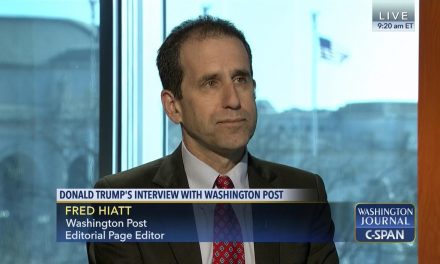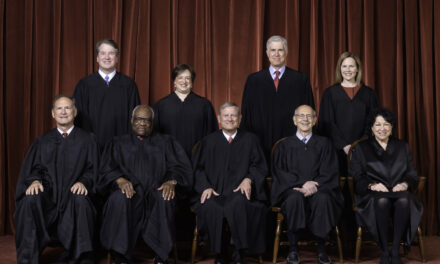“It is a sign of how far the lower federal courts have drifted to the right that the Supreme Court had to correct this racially discriminatory prosecution.”
– From today’s NYT editorial on yesterday’s USSC decision that overturned a Texas death-penalty case in which eligible black jurors were “shuffled” so that 10 of the 11 eligible black jurors were removed.
Racism thrives, even in the trial that started Monday of Edgar Ray Killen, an 80-year-old “reputed Ku Klux Klansman” and a “part-time Baptist preacher who allegedly organized the killings” of three civil rights workers in 1964.
The city tourism agency organized bus tours for journalists to see civil rights sites that are relevant to the trial. They passed by Killen’s modest home, which is flanked by cement angels and other figurines and a heart-shaped U.S. flag. Most of his relatives live in the isolated farm area, not far from where the workers’ car was stopped. Most of the yards have signs posting the Ten Commandments. (Chicago Tribune/KRT Wire, June 13, 2005)
The rightward trend, and racism, shows in how the federal government picks its top domestic terrorism targets. Mike German, an ex-FBI agent, resigned from the FBI and its counter terrorism program last year in protest of its failure to focus on the white supremacist and militia groups he’d infiltrated … below:
Mike German was interviewed by Amy Goodman yesterday on Democracy Now!. Ms. Goodman noted in her introduction that:
On June 5th, he wrote an editorial in the Washington Post advocating that law enforcement pay more attention to organizations that produce so-called lone wolf extremists like Timothy McVeigh who was executed for the 1995 Oklahoma City bombing and Eric Rudolph who planted bombs at the Atlanta Olympics, abortion clinics and a gay nightclub.
German writes that “lone extremists pose a challenge for law enforcement because they are difficult to predict. It’s like searching every haystack for a needle. Perhaps we’d have better luck if we paid more attention to the needle factories.”
From the interview:
MIKE GERMAN: Well, I was involved in a case in Los Angeles in 1992, and in that case, there was a cooperating witness that introduced me into the group.
And then I was involved in a second case in northwest Washington in 1996, and that also involved a different cooperating witness, but it was introductions into the group through public citizens, citizens who saw a problem and wanted to help law enforcement protect the community. And once they introduced me in, then it was up to me to try to figure out what — who the criminals were within the group and what the criminal activity was, and gather evidence of that criminal activity.
AMY GOODMAN: Can you talk more specifically, like Los Angeles, what exactly what that group was doing?
MIKE GERMAN: Well, in Los Angeles there were actually a number of different groups that we had had gotten into, and they were white supremacist groups. Los Angeles in 1992, of course, the community was suffering after — the aftermath of the racial unrest following the Rodney King police beating, so there was a lot of racial animosity in the city.
And the white supremacist groups were attempting to take advantage of that situation to spark a race war.
So they were preparing for the race war by manufacturing machine guns and explosives, and one of the cells that we got into was actually already involved in a bombing campaign, and we were able to solve those bombings and recover more explosive devices and stop ongoing conspiracies to bomb synagogues and churches that were attended prominently by African Americans.
AMY GOODMAN: Looking at the piece that you did in The Washington Post, “Behind the Lone Terrorist, a Pack Mentality,” you talk about every once in a while, a follower of these movements bursts violently into our world with deadly consequences. McVeigh, Eric Rudolph, Buford Furrow, Jr., Paul Hill, to name just a few, all convicted murderers, identified as lone extremists, the most difficult terrorists to stop, because they act independently from any organization. Or do they?
You write, “Tim McVeigh seemed able to find a militia meeting wherever he went. He was linked to militia groups in Arizona and Michigan, white supremacist groups in Oklahoma and Missouri, and at gun shows he sold copies of The Turner Diaries, the racist novel written by the founder of a neo-Nazi organization. No one finds such groups by accident.”
You talk about Eric Rudolph who planted the bombs at the Atlanta Olympics, two abortion clinics, gay nightclub, grew up in the Christian Identity Movement, which identifies whites as God’s chosen people and encourages the faithful to follow the Biblical example of Phineas, by becoming instruments of God’s vengeance.
Aryan Nations, formerly of Hayden Lake, Idaho, was the center of Christian Identity thought. Not incidentally, Buford Furrow worked there as a security guard before going on a shooting rampage at a Jewish day care center in Southern California.
And you talk about Paul Hill, wrote of the need to take Phineas actions to prevent abortions and was so well known that the news media used to — used him to speak in support of Michael Griffin’s killing of abortion doctor, David Gunn, that Hill later shot an abortion provider himself should have surprised no one. Give us the landscape of these groups. They’re well known.
MIKE GERMAN: Sure, they’re well known. And they’re very well organized, and they’re very smart.
They understand criminal conspiracy laws. They understand the First Amendment. And they take advantage of those in training their operatives to go out and do these activities.
And the point I was trying to make is — is that we can’t look at these as isolated instances. It would be as if we were investigating the mafia and looking at every mafia hitman as a lone assassin and not looking at the underlying organization that was producing these murders, you know.
And these people are careful, the leadership are careful about separating themselves from the actual criminal conspiracy, you know. But they do set the motive. They set the method that’s used, and I believe that makes them part of the conspiracy. Now, I’m not saying necessarily you can make a criminal case against them, but all I’m saying is if we’re — if our number one priority is to prevent acts of terrorism, we have to pay attention to these needle factories, because that’s what they’re producing is these lone extremist terrorists.
And it’s not just random violence that occurs once in a while, it’s an organized pattern of activity. …
Questions. I have questions.
Is it the blowback from the Ruby Ridge and other such incidents that is disorienting the FBI from its key task of zeroing in on these white supremacist groups?
Is it also a part of a rightward trend in law enforcement and the judicial system, a trend that tends to minimize the danger of racist groups?
MIKE GERMAN: Well, I think the problem is if you blind yourself to the conspiracy, then the chances of them being successful in their next act of lone extremist terrorism is more likely. …
[….]
[T]hese groups, like the Ku Klux Klan and Aryan Nations, have rich criminal histories just as deep as the Italian mafia does, yet, you know, we tend to give them a political status that I don’t think is necessarily deserved.
[….]
[A] white man beats a black man on the street, is that just a random assault or is that a hate crime, or is that an act of domestic terrorism, or is it nothing? Does it not get reported at all?
So, any time that the government talks about numbers of terrorism attacks, what they’re talking about is the number of attacks that were reported as acts of terrorism.
And like the school violence, sometimes it’s not even thought of as domestic terrorism, but if neo-Nazi influence is influencing these kids to act out violently, I would argue that that’s part of the terrorist movement, and that that, by paying attention to the neo-Nazi groups that are producing that literature and those websites, we might have a better idea of who might be the next lone extremist, so that we can stop him. …
Read, or listen to/watch the full interview. Former agent German goes on to talk about the problem of collecting intelligence in the FBI and how that problem has gotten worse since 9/11.







